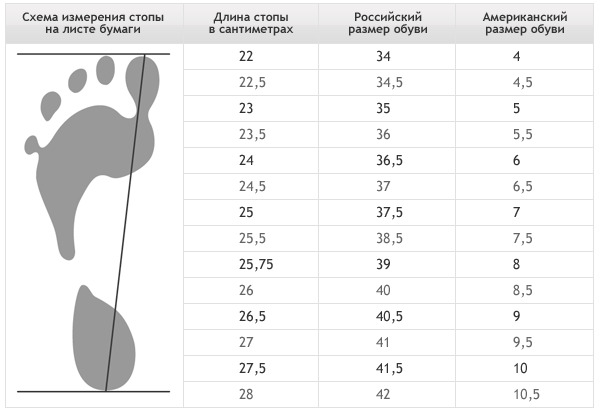Instruction
1
Shoe size is determined by two main parameters – the length and width of the foot. Usually it refers to only the length of the foot. However, to measure the width also necessary: sometimes the size of the Shoe fits, but it sits too tight and cause chafing. If you know that you have non-standard foot, it is better to pay attention to these two parameters.
2
Foot length is measured is simple: you need to get up on the floor, placing the leg a sheet of paper. You can stand on a piece of paper barefoot or in socks, depending on which shoes will then wear - closed. Outline your foot with a pencil, then measure with a ruler the distance from the heel to the longest finger. The resulting cm – this will be your foot size. It is usually rounded to a whole number, it is sometimes wise to add extra inch, so the shoes sat more freely. In centimeters is calculated, the so-called international standard sizes, but in modern stores is not found. There are several other systems to indicate Shoe size.
3
The European system of size determined by the insole, so it gives a small allowance for shoes, equal to about 10-15 mm. the Unit of measurement is not whole centimetre, but a special bar, which equals 2/3 cm, which is about 6.7 mm. Therefore, the final value of the Shoe gets more than the length of the foot in centimeters. This is the usual us Shoe size – 35, 36, 37, etc.
4
English and American sizes are different from European. Initially, these countries did not use the metric system, so the length of the foot is not determined in centimeters and in inches. An inch is 2.54 cm, and the numbering goes through 1/3 inch, i.e., at intervals of 8.5 mm is a new size. Zero measure in the English system is the foot of a newborn baby is about 4 inches. In the American system standards of the original length of the foot less, but the size range is also modified all through 1/3 of an inch.

5
Completeness of shoes on the labels is indicated not always. But sometimes it is still possible to distinguish shoes with a wide or narrow Shoe – it will just be the right option. To establish the completeness of the feet better at the end of the day, when feet become larger due to natural swelling of the limb after walking. Take a tape measure and wrap it around the foot on the most protruding part. If the length of your foot about 220 mm, width 205 mm is the normal width of the foot, the difference between the two figures is around 15 mm. But if the difference between the length of the foot and its width less than 10 mm, the foot is considered wide.
